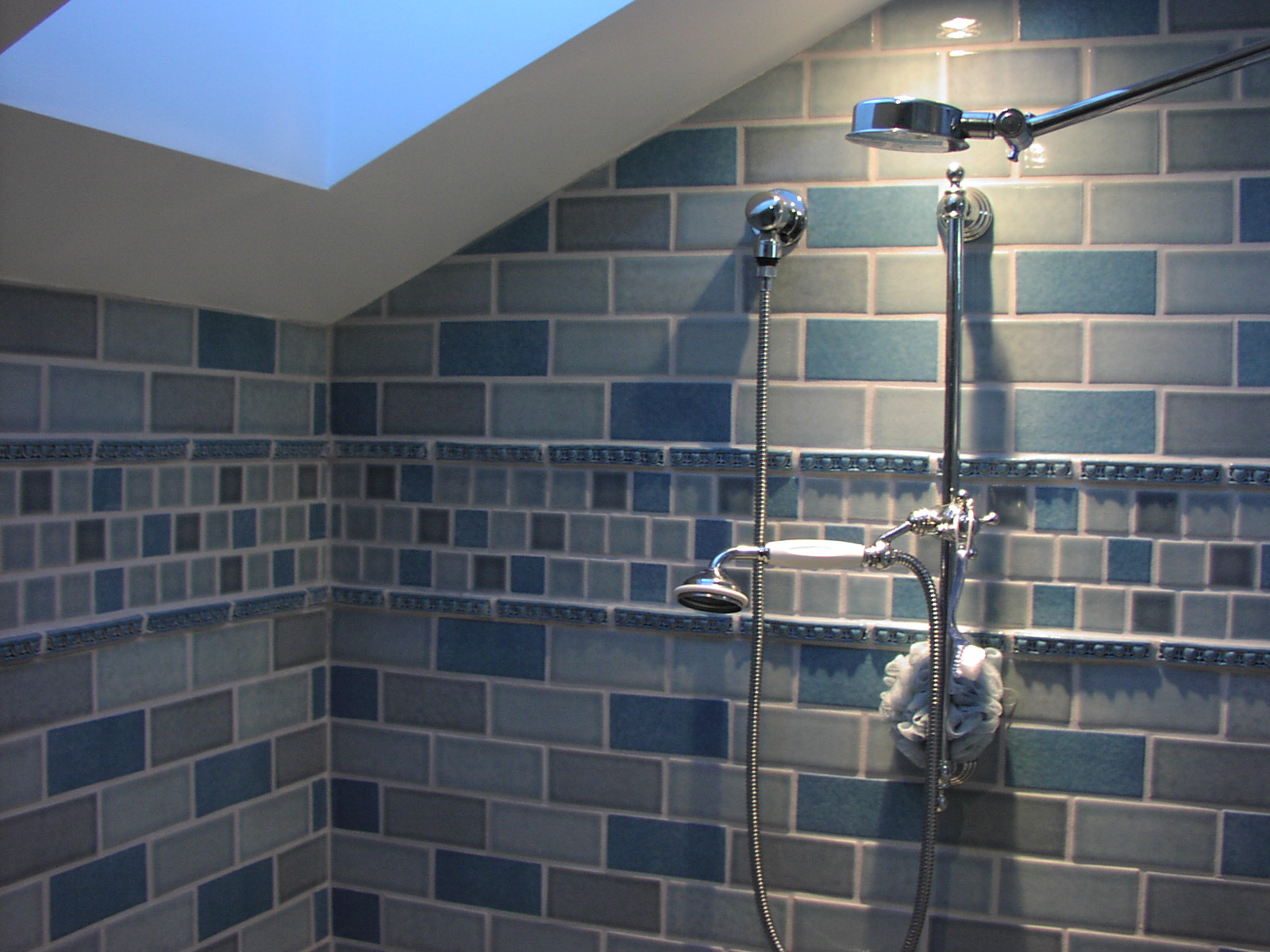Mold in the shower is a common problem that can affect both the aesthetics and healthiness of your bathroom. Mold thrives in damp, warm environments, making showers an ideal breeding ground. In this comprehensive guide, we will cover everything you need to know about identifying, preventing, and removing mold from your shower.
Understanding Mold
What is Mold?
Mold is a type of fungus that grows in multicellular structures called hyphae. These hyphae produce spores that can spread through the air and colonize new environments. Mold thrives in moist, warm conditions and can grow on various surfaces, including wood, paper, carpet, and food. In homes, mold is often found in areas with high humidity, such as bathrooms, basements, and kitchens.
Types of Mold Found in Showers
Several types of mold can be found in showers, including:
- Aspergillus: A common mold that can cause allergic reactions and respiratory issues.
- Cladosporium: Typically found on wood surfaces and fabrics; it can cause allergic reactions.
- Penicillium: Often blue or green, this mold can grow on walls, floors, and food.
- Stachybotrys chartarum (Black Mold): Known for its dark color, this mold can produce toxic spores and is often found in areas with persistent moisture problems.
Health Risks of Mold
Exposure to mold can cause a range of health problems, particularly for individuals with allergies, asthma, or compromised immune systems. Health risks include:
- Respiratory issues
- Allergic reactions
- Skin irritation
- Eye irritation
- Sinus congestion
- Headaches
In severe cases, prolonged exposure to mold can lead to more serious health conditions, such as infections or neurological problems.
Identifying Mold in Your Shower
Signs of Mold Growth
Identifying mold early is crucial for preventing its spread and mitigating health risks. Common signs of mold growth in your shower include:
- Discoloration: Black, green, brown, or white spots on tiles, grout, or caulking.
- Musty Odor: A persistent, musty smell indicates mold presence.
- Peeling Paint or Wallpaper: Moisture behind walls can lead to mold growth.
- Visible Growth: Fuzzy or slimy patches on surfaces.
Common Areas for Mold in Showers
Mold can grow in various parts of your shower, including:
- Tiles and Grout: Porous surfaces that retain moisture.
- Shower Curtains and Liners: Fabric or plastic materials that remain damp.
- Shower Heads and Fixtures: Areas that trap water and provide a breeding ground.
- Caulk and Sealant: Cracks and crevices where water can seep in.
- Corners and Edges: Hard-to-reach areas where moisture accumulates.
Preventing Mold Growth
Proper Ventilation
Good ventilation is essential for preventing mold growth in your shower. Here are some tips:
- Use Exhaust Fans: Turn on the exhaust fan during and after showers to remove moisture from the air.
- Open Windows: If possible, open windows to allow fresh air to circulate.
- Leave the Door Open: After showering, leave the bathroom door open to let moisture escape.
Regular Cleaning
Regular cleaning can help prevent mold buildup. Follow these guidelines:
- Clean Surfaces Weekly: Wipe down tiles, grout, and fixtures with a mild cleaner.
- Wash Shower Curtains and Liners: Wash them regularly to remove soap scum and mildew.
- Scrub Grout and Caulking: Use a brush to clean grout and caulking lines.
Controlling Humidity
Keeping humidity levels in check is crucial for mold prevention:
- Use a Dehumidifier: A dehumidifier can help reduce humidity levels in your bathroom.
- Fix Leaks Promptly: Repair any leaks in plumbing or fixtures to prevent water accumulation.
- Dry Wet Surfaces: After showering, dry wet surfaces with a towel or squeegee.
Materials and Tools Needed for Mold Removal
Before you start removing mold from your shower, gather the necessary materials and tools:
Materials
- White vinegar
- Baking soda
- Hydrogen peroxide
- Dish soap
- Borax
- Bleach
- Commercial mold remover
Tools
- Spray bottles
- Scrub brushes
- Toothbrush
- Sponge
- Microfiber cloth
- Rubber gloves
- Protective eyewear
- Mask or respirator
- Bucket
Step-by-Step Guide to Removing Mold from Your Shower
Preparing the Area
- Ventilate the Bathroom: Open windows and turn on the exhaust fan.
- Protect Yourself: Wear rubber gloves, protective eyewear, and a mask or respirator.
- Remove Personal Items: Take out any personal items from the shower area.
Removing Mold from Tiles and Grout
- Apply Cleaning Solution: Choose a cleaning solution (white vinegar, hydrogen peroxide, or a commercial mold remover) and spray it generously on the affected areas.
- Let it Sit: Allow the solution to sit for at least 10-15 minutes to penetrate the mold.
- Scrub the Area: Use a scrub brush or toothbrush to scrub the tiles and grout, paying extra attention to heavily affected areas.
- Rinse and Dry: Rinse the area thoroughly with water and dry it with a microfiber cloth.
Removing Mold from Shower Curtains and Liners
- Remove the Curtain or Liner: Take down the shower curtain or liner.
- Wash the Curtain: Place fabric curtains in the washing machine with laundry detergent and a cup of white vinegar. For plastic liners, soak them in a mixture of water and vinegar or bleach.
- Dry Completely: Hang the curtain or liner to dry completely before re-installing.
Removing Mold from Shower Heads and Fixtures
- Disassemble if Possible: If your shower head or fixtures can be easily disassembled, do so.
- Soak in Vinegar: Soak the parts in a mixture of white vinegar and water for an hour to dissolve mold and mineral deposits.
- Scrub and Rinse: Scrub the parts with a brush and rinse thoroughly with water.
- Reassemble and Dry: Reassemble the fixtures and dry them with a microfiber cloth.
Removing Mold from Caulk and Sealant
- Apply Cleaning Solution: Spray a cleaning solution (white vinegar, hydrogen peroxide, or a commercial mold remover) on the affected caulk or sealant.
- Let it Sit: Allow the solution to sit for at least 10-15 minutes.
- Scrub the Area: Use a scrub brush or toothbrush to clean the caulk or sealant.
- Rinse and Dry: Rinse the area thoroughly with water and dry it with a microfiber cloth.
- Replace if Necessary: If the mold is deeply embedded or the caulk is damaged, consider removing and replacing the caulk.
Deep Cleaning and Final Steps
- Clean Entire Shower: After removing visible mold, clean the entire shower with a mild detergent or commercial cleaner.
- Inspect for Remaining Mold: Check for any remaining mold spots and repeat the cleaning process if necessary.
- Dry Thoroughly: Ensure the shower is completely dry to prevent mold from returning.
- Apply Mold Inhibitor: Consider applying a mold inhibitor to tiles and grout to prevent future growth.
Natural Remedies vs. Chemical Cleaners
Benefits and Drawbacks of Natural Remedies
Natural Remedies:
- White Vinegar: Effective against mold and mildew; non-toxic and safe for use around pets and children.
- Baking Soda: Mild abrasive that helps scrub mold away; non-toxic and deodorizing.
- Hydrogen Peroxide: Kills mold spores; safe for most surfaces but can bleach fabrics.
- Borax: Natural cleaner that inhibits mold growth; less toxic than commercial chemicals.
Drawbacks:
- May require multiple applications.
- Not as fast-acting as chemical cleaners.
- Some natural remedies may have a strong odor.
Benefits and Drawbacks of Chemical Cleaners
Chemical Cleaners:
- Bleach: Highly effective at killing mold and whitening surfaces.
- Commercial Mold Removers: Formulated to target mold and mildew specifically; fast-acting and powerful.
Drawbacks:
- Toxic fumes and potential health risks.
- Can damage some surfaces and materials.
- Environmental impact of chemical runoff.
Frequently Asked Questions About Mold In The Shower
How often should I clean my shower to prevent mold?
It’s best to clean your shower at least once a week to prevent mold growth. Focus on scrubbing tiles, grout, and fixtures, and wash shower curtains regularly.
Can I use bleach to remove mold from my shower?
Yes, bleach is effective at killing mold and whitening surfaces. However, use it with caution and ensure proper ventilation, as bleach fumes can be harmful.
Is mold in the shower dangerous?
Mold can cause allergic reactions, respiratory issues, and skin irritation. It’s important to remove mold promptly to maintain a healthy environment.
What is the best natural remedy for mold removal?
White vinegar and hydrogen peroxide are both effective natural remedies for mold removal. They are non-toxic and safe for use on most surfaces.
How can I prevent mold from growing in my shower?
Proper ventilation, regular cleaning, and controlling humidity levels are key to preventing mold growth. Use exhaust fans, open windows, and dry wet surfaces after use.
Can I paint over mold in my shower?
Painting over mold is not recommended, as it will not eliminate the underlying problem. It’s important to clean and remove the mold thoroughly before painting.
Why does mold keep coming back in my shower?
Recurring mold can be due to persistent moisture, poor ventilation, or incomplete cleaning. Addressing these issues can help prevent mold from returning.
How do I remove mold from grout?
Apply a cleaning solution (vinegar, hydrogen peroxide, or commercial mold remover) to the grout, let it sit for 10-15 minutes, then scrub with a brush and rinse.
Can mold damage my shower tiles?
Mold can stain and weaken grout, but it typically doesn’t damage tiles directly. However, if left untreated, mold can lead to more serious structural issues.
What should I do if mold spreads beyond my shower?
If mold spreads beyond your shower, it may indicate a more serious problem with moisture or ventilation. Consider consulting a professional mold remediation service.
Are there mold-resistant shower products available?
Yes, there are mold-resistant caulks, sealants, and paints available that can help prevent mold growth in your shower.
How do I remove mold from silicone caulk?
Apply a cleaning solution (vinegar, hydrogen peroxide, or commercial mold remover) to the caulk, let it sit for 10-15 minutes, scrub with a brush, rinse, and dry.
Can I use essential oils to remove mold?
Some essential oils, like tea tree oil, have antifungal properties and can be used as natural mold removers. Mix a few drops with water and spray on affected areas.
How do I remove mold from shower fixtures?
Disassemble fixtures if possible, soak them in a vinegar and water solution, scrub with a brush, rinse, and dry thoroughly before reassembling.
Is black mold more dangerous than other types of mold?
Black mold (Stachybotrys chartarum) can produce toxic spores that may cause more severe health issues. It’s important to remove any mold promptly, regardless of type.
How do I remove mold from a fabric shower curtain?
Wash the curtain in the washing machine with laundry detergent and a cup of white vinegar. For stubborn mold, add some baking soda or hydrogen peroxide.
How do I remove mold from a plastic shower liner?
Soak the liner in a mixture of water and vinegar or bleach, then scrub with a brush and rinse thoroughly.
Can I use a pressure washer to clean mold from my shower?
A pressure washer can be used for outdoor areas but is not recommended for indoor showers due to the risk of water damage and potential harm to surfaces.
How do I remove mold from caulk without damaging it?
Use a gentle scrub brush and a non-abrasive cleaner like vinegar or hydrogen peroxide. Avoid using harsh chemicals that can degrade the caulk.
What is the best way to dry a shower after use?
Use a towel or squeegee to remove excess water from surfaces, and turn on the exhaust fan or open windows to help moisture evaporate.
How do I remove mold from natural stone tiles?
Use a pH-neutral cleaner or a mixture of water and mild dish soap. Avoid acidic cleaners like vinegar, which can damage natural stone.
Can I use a steam cleaner to remove mold from my shower?
Yes, steam cleaners can be effective at killing mold and mildew. Use the steam cleaner according to the manufacturer’s instructions and ensure thorough drying afterward.
How do I know if mold is behind my shower tiles?
Signs of mold behind tiles include a persistent musty odor, peeling paint or wallpaper, and visible mold growth at tile edges. Professional inspection may be needed.
Can mold grow in shower drains?
Yes, mold can grow in shower drains where moisture and organic matter accumulate. Clean drains regularly with a mixture of baking soda and vinegar.
How do I remove mold from shower doors?
Spray a vinegar and water solution on the doors, let it sit for 10-15 minutes, scrub with a non-abrasive sponge, rinse, and dry with a microfiber cloth.
How do I remove mold from a shower mat?
Wash the mat in the washing machine with hot water and laundry detergent. Add a cup of vinegar for extra cleaning power. Dry the mat thoroughly before use.
Can mold grow on shower caddies?
Yes, mold can grow on shower caddies, especially if they are not dried properly. Clean caddies regularly with a vinegar and water solution and dry thoroughly.
How do I remove mold from a fiberglass shower?
Use a non-abrasive cleaner like vinegar or hydrogen peroxide, apply to the affected areas, let it sit for 10-15 minutes, scrub with a sponge, rinse, and dry.
What is the best commercial mold remover for showers?
Several effective commercial mold removers are available, such as RMR-86, Tilex Mold and Mildew Remover, and Concrobium Mold Control. Choose one based on user reviews and suitability for your surfaces.
How do I remove mold from shower handles?
Disassemble handles if possible, soak in a vinegar and water solution, scrub with a brush, rinse thoroughly, and dry before reassembling.
Conclusion
Mold in the shower is a common issue that requires diligent prevention and removal to maintain a healthy and clean bathroom environment. By understanding the types of mold, identifying early signs, and using the right methods and tools, you can effectively manage and remove mold from your shower.
Regular maintenance, proper ventilation, and controlling humidity levels are key to preventing mold growth. When mold does appear, using a combination of natural remedies and chemical cleaners can help you tackle the problem effectively. Remember to take safety precautions, such as wearing protective gear and ensuring proper ventilation, during the mold removal process.
By following the steps and tips outlined in this comprehensive guide, you can keep your shower mold-free and enjoy a cleaner, healthier bathroom.



